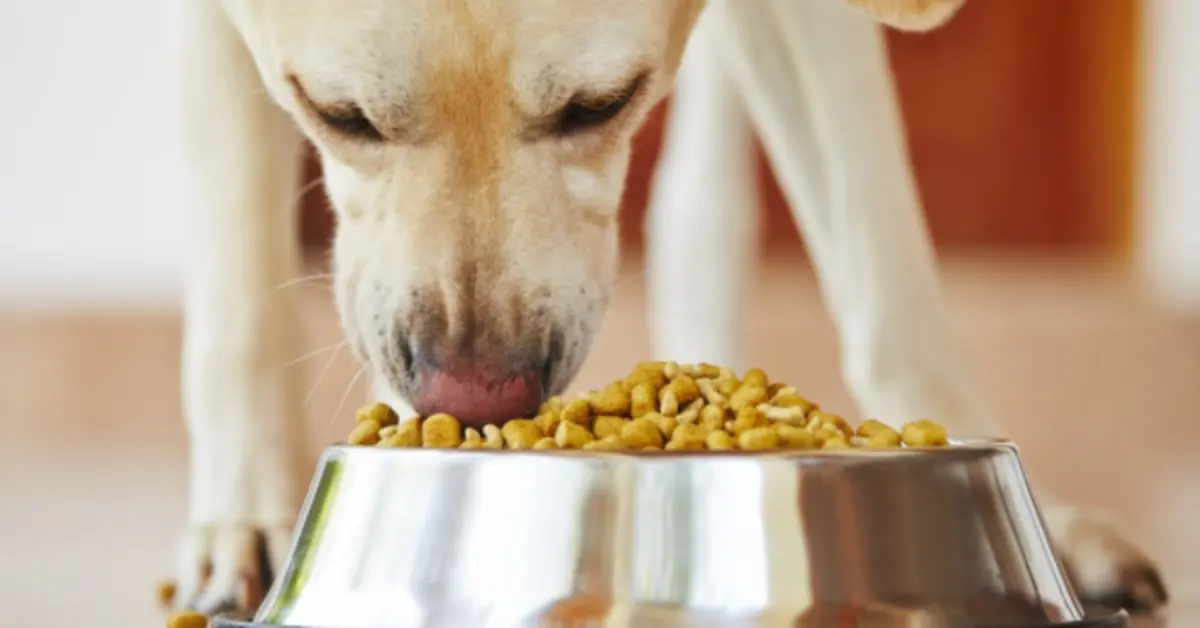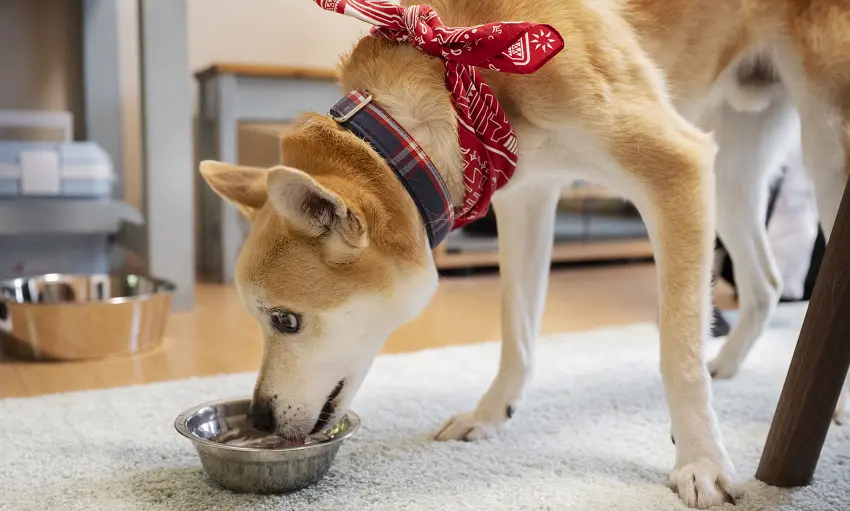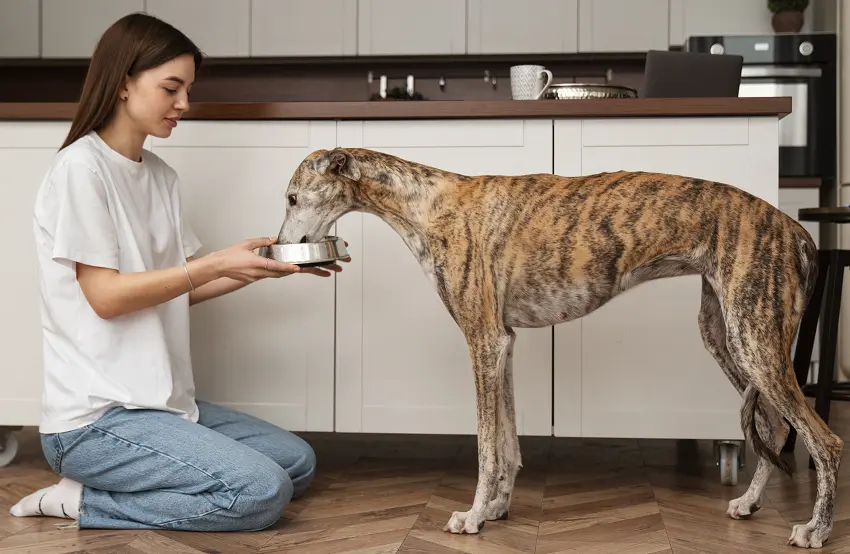Can A Dog Eat Cold Food From Fridge? Is It Safe?
Can a dog eat cold food from fridge? Does he care if his meal is warm or cold? Discover if it’s safe for dogs to consume cold food and learn about potential risks and benefits.
As humans, we prefer warm meals, especially during winter. This is why we assume that dogs also prefer having their meals warmed after being stored in the refrigerator. However, the question is this: does your dog even care about the temperature? We will answer this question to enlighten fellow dog owners who have the same concern in mind in this post.

Understanding the Digestive System of Dogs
The digestive system of dogs is different from that of humans. Dogs have a shorter digestive tract, which means that their food is processed more quickly. This is why dogs are known for their ability to eat raw food without getting sick.
When it comes to cold food, dogs can generally tolerate it, but it’s important to consider their digestive system. Cold food can slow down the digestion process in dogs, which may lead to discomfort or digestive issues. It’s important to monitor your dog’s response to cold food and make adjustments accordingly.
Can Dogs Eat Cold Food From the Fridge?

Instinct-wise, there might be a basis why dogs may prefer warm food over cold one. In the wild, canines hunt and kill for their food. The dogs will consume their catch immediately, which means the animal’s meat is still warm. But overall, experts say that dogs don’t really care if their food is cold or warm as long as the dog can taste and smell the food.
Potential Risks of Feeding Dogs Cold Food
Feeding dogs cold food can pose some potential risks. One risk is that cold food may cause gastrointestinal upset in dogs, leading to diarrhea or vomiting. Another risk is that cold food may cause discomfort or pain in dogs with dental issues or sensitive teeth.
Additionally, some cold foods may contain ingredients that are harmful to dogs. For example, certain fruits and vegetables that are safe for humans may be toxic to dogs. It’s important to research and ensure that the cold food you’re feeding to your dog is safe and suitable for their consumption.
Benefits of Feeding Dogs Cold Food
While there are potential risks, there are also some benefits to feeding dogs cold food. Cold food can provide relief for dogs during hot weather or if they’re experiencing inflammation or swelling. It can also be soothing for dogs with dental issues or teething puppies.
Additionally, some pet owners find that feeding their dogs cold food can help slow down their eating pace, which can be beneficial for dogs who tend to eat too quickly. Cold food can also serve as a tasty treat or reward for dogs, making mealtime more enjoyable.
When should I warm my dog’s food?
There’s no harm in making your dog’s food warm by heating it in the microwave or adding warm water. Do this if you have the time and your dog prefers it that way.
You may also want to warm your dog’s food if it’s recovering from an illness. Many dogs tend to be picky with food when they are sick. In this case, warming up the food will enhance its taste and smell, which appeals more to dogs with poor appetites.
Moreover, senior dogs may also benefit from having their food heated up. This is because old dogs often have a diminished sense of taste and smell.
Important warning when heating your dog’s food
One of the biggest disadvantages of warming your dog’s food is that the heat may destroy some nutrients. After all, canned food products are ready-to-eat and aren’t meant to be cooked. Also, kibble or dry food can go bad in heat, significantly if warmed in the microwave. This is why you should refrain from warming dry dog food because it could bring more harm than help to your dog.
As for homemade food, there’s no problem with cooking. Just make sure that the temperature is appropriate when feeding your dog. Aside from that, dog food manufacturers warn about heating their products. So it’s crucial to check for this part before you try to warm your dog’s meals. When in doubt, it’s always best to consult the veterinarian about what is best for your dog.
Can dogs eat cold food from the fridge without getting an upset stomach?
Growing up, my parents would often tell me to drink or eat something warm to avoid upsetting my stomach. This may also be true for dogs in some cases.
Chilled food can upset a canine’s stomach, especially those with sensitive digestion. Also, if it’s winter, your dog will be more unlikely to eat cold food. If your pet exhibits signs of an upset stomach after eating a cold meal, you should try giving it some warm broth. This will help reset your pet’s tummy.
How can you warm up refrigerated dog food?

Unless you always have the time to thaw frozen dog food manually, you surely need some hacks on doing it fast. Below are some of the ways I recommend without destroying the nutrients of the food:
Warm it using warm water
If putting warm water on the dog’s food isn’t possible, you can soak the bowl in warm water instead. This will warm the dog’s food without making it too hot.
Overall, this method removes the chill from frozen dog food. However, if you need to thaw the food more, feel free to place it inside a vacuum-sealed bag, then soak it in warm water.
Use some warm broth
The warm broth is an excellent option to warm up cold dog food from the fridge. It will also enhance the flavor of the food, perfect for picky eaters.p
Just make sure that the broth is unsalted and plain. This is to prevent excessive salt intake among dogs, which can be quite life-threatening.
Steam it
For dog food that requires fast thawing, steaming is a good choice. You can place the dog food inside a steamer, but make sure you’re using low heat.
Aside from warming up the food, it will also add moisture. This will make your dog’s meals more appealing while voiding any changes to the formula.
Warming dog food doesn’t fix spoilage!
Take note that you can only store canned dog food in the fridge for up to three to five days. After that, the food needs to be tossed into the bin since it’s likely spoiled or contaminated.
Remember that spoiled dog food is dangerous for dogs and must never be fed. Even if you heat or warm it, the contamination will still be there.
Conclusion
Can dogs eat cold food from the fridge? Yes, feeding dogs cold food can be safe as long as you take into account their digestive system and potential risks. While it can provide some benefits, it’s important to monitor your dog’s response and consult with your veterinarian.
Striking a balance between offering cold food and maintaining a nutritious and balanced diet is crucial for your dog’s overall health. By being mindful of your dog’s individual needs and consulting with professionals, you can ensure that your dog’s diet includes safe and suitable cold food options.
